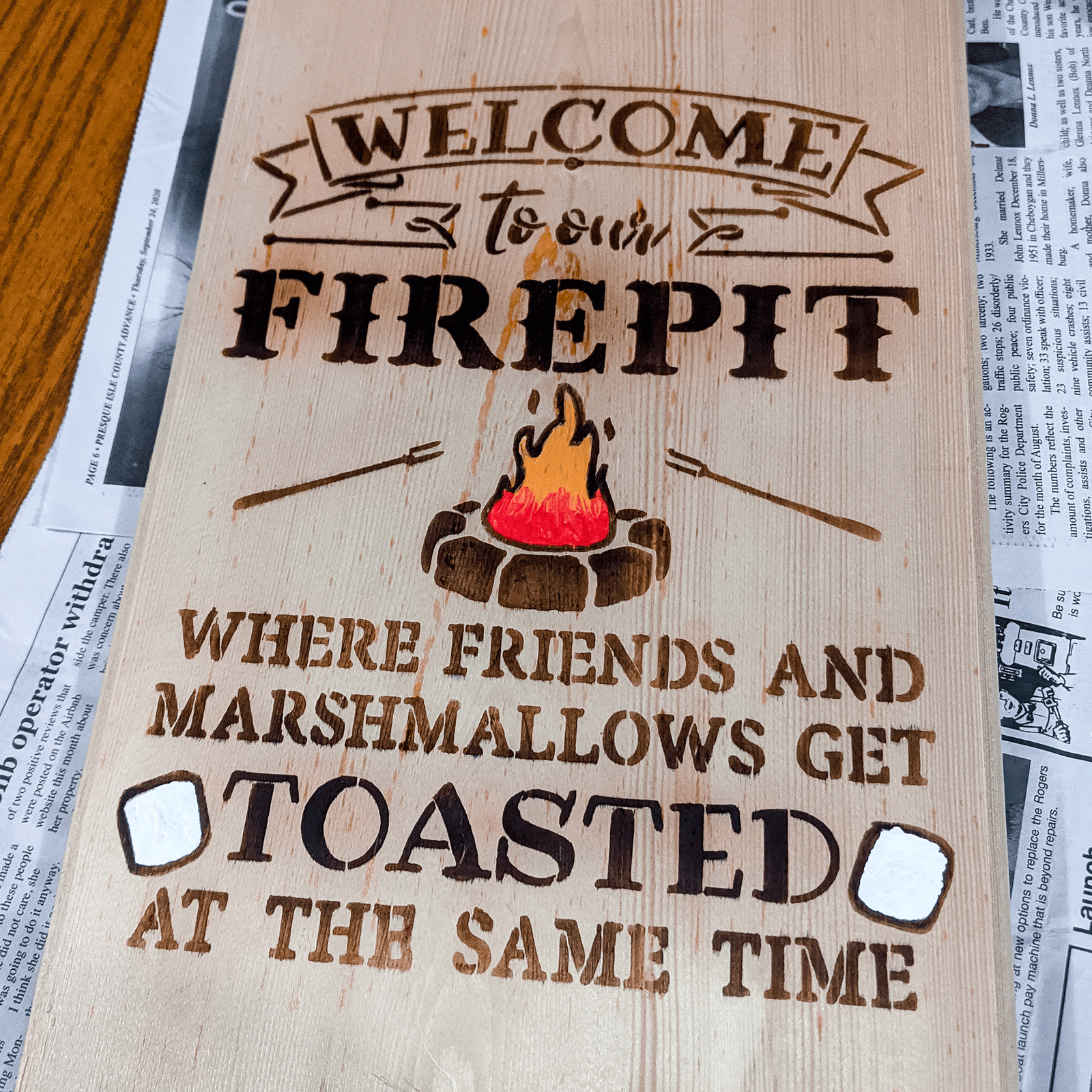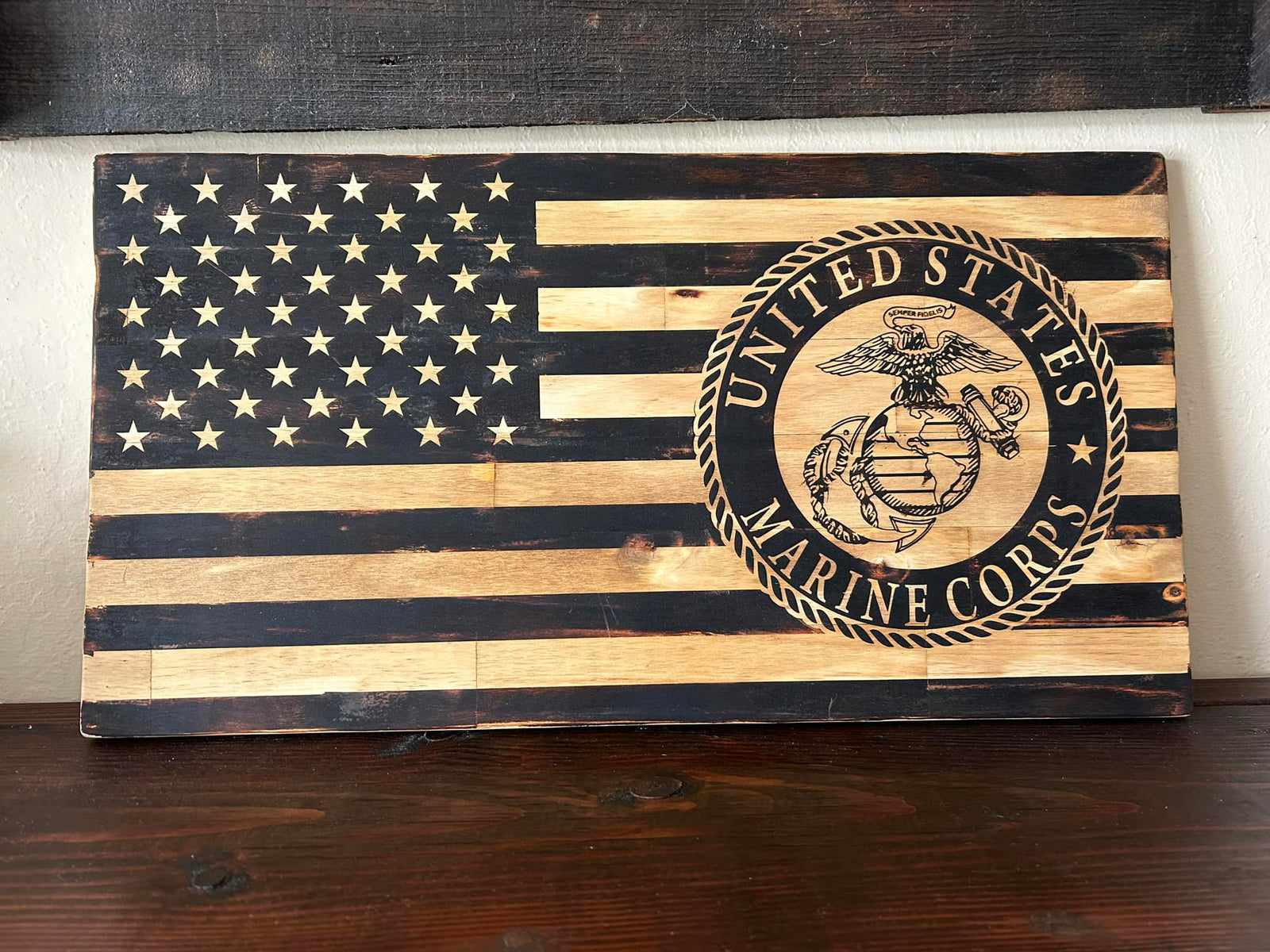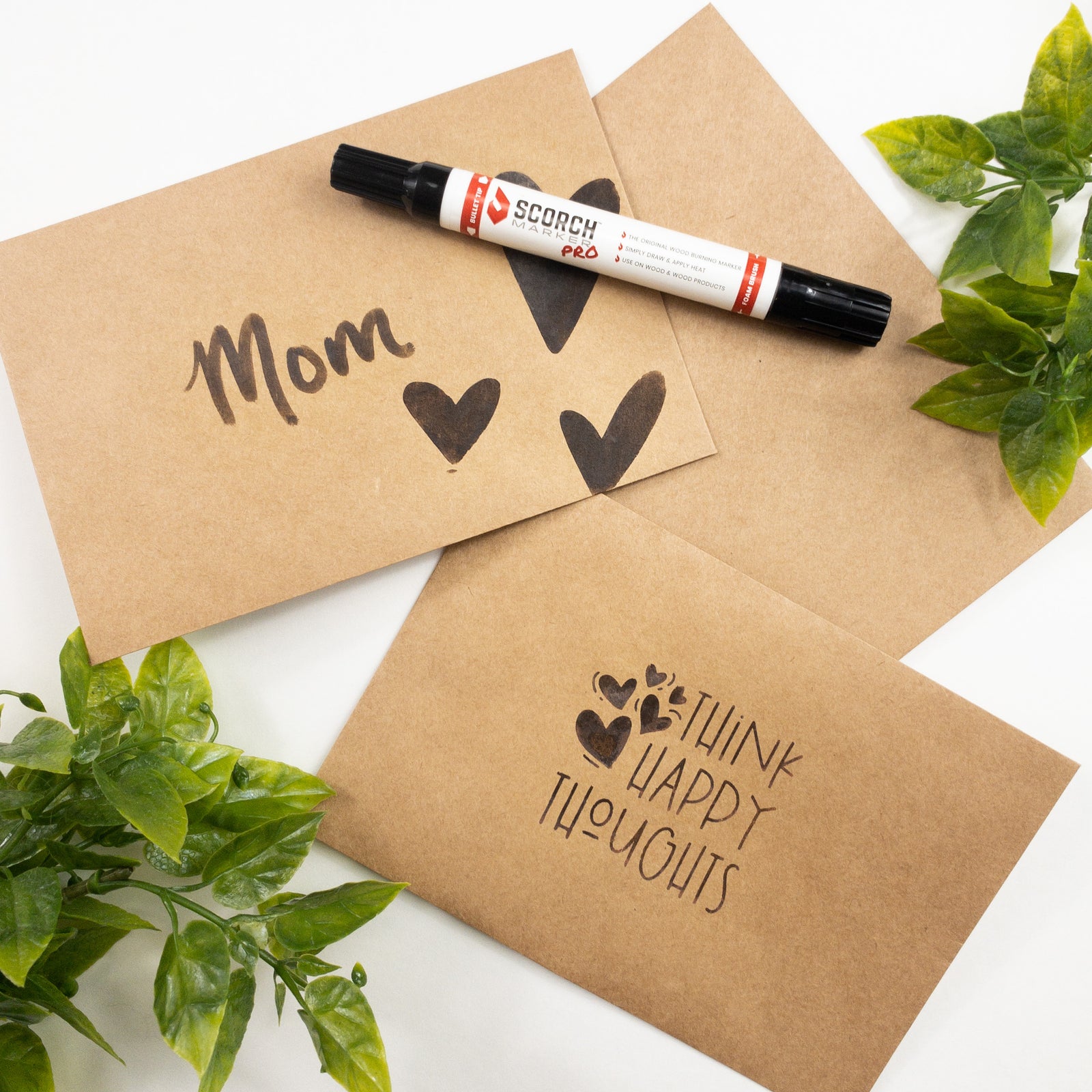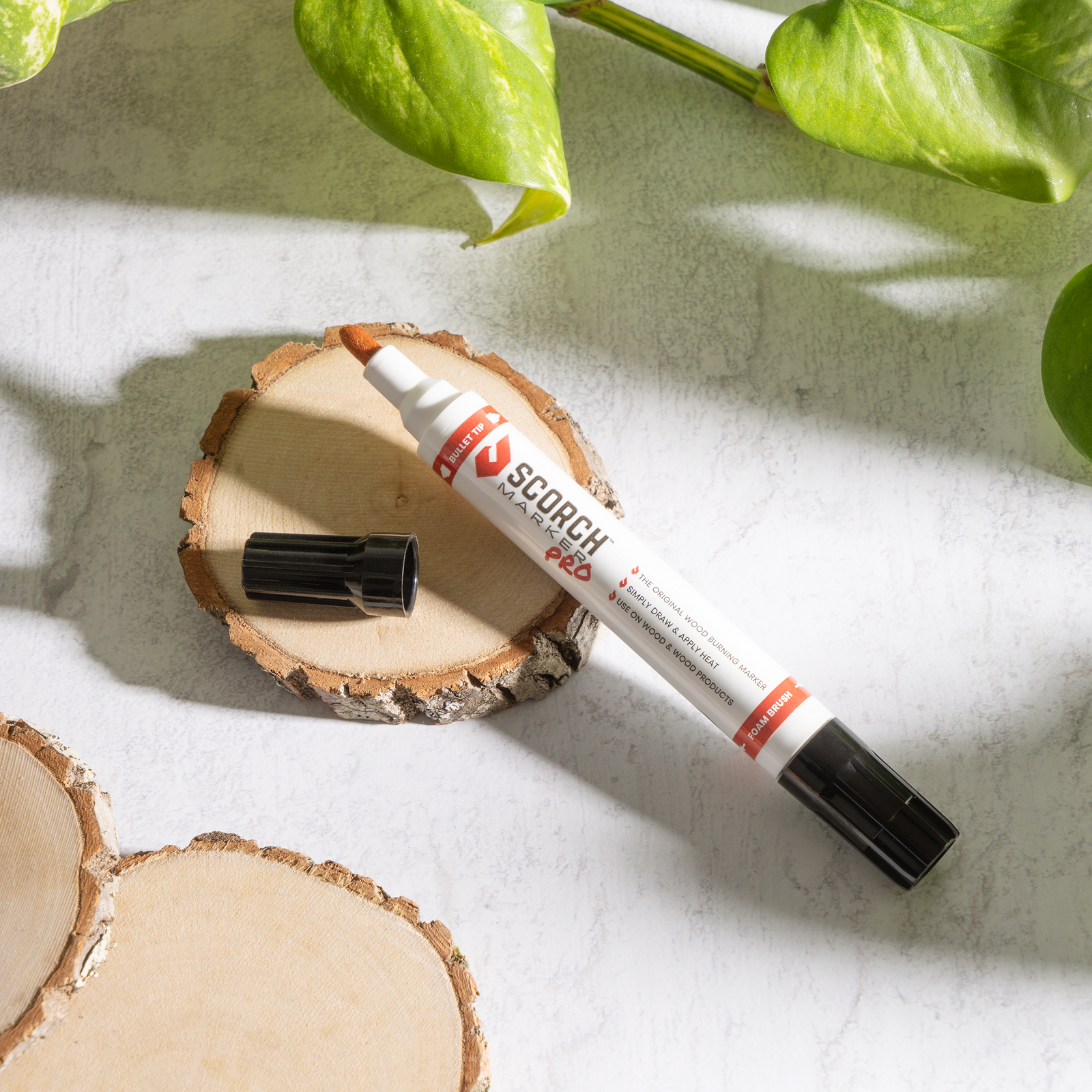
When it comes to pyrography, not all wood is created equally.
In fact, there are even some woods that you should avoid burning altogether.
Not only can some types of wood be difficult to work with, but others can be completely hazardous to your health.
In this article, we’re talking about some of the most harmful woods for combining with your Scorch Marker, and what you can do to keep yourself safe.
Some Types of Wood are Toxic to Burn
Due to their chemical makeup, treatment, or coating, some woods should never be burned.
This is because heating certain chemicals, and releasing them into the air, can have unforetold effects on your lungs and health.
However, other types of wood, like painted wood, only require some simple preparation before they are safe to burn.

How to Make Sure Your Wood is Safe for Burning
In order to make sure that your wood is safe and non-toxic for crafting with high heat, we recommend you ask yourself three questions.
1. Has it Been Chemically Treated?
Pressure-treated wood may look like a regular old piece of plywood, but it couldn’t be more different.
Pressure-treated wood has been exposed to pressurized chemicals in an effort to preserve it.
Essentially, all the air pockets inside the wood are replaced with fungicide and other chemicals.
Burning treated wood released a cocktail of chemicals into the air, which can be incredibly damaging to the lungs.
It’s recommended that you never heat or burn this type of wood.
2. Has the Finish or Paint Been Sanded Away?
Painted or finished wood isn’t nearly as dangerous as wood that’s been treated.
In fact, with a little preparation, these woods can still be used for crafting without worry.
All you need to do is sand the paint, finish, or top coat away!
The Scorch Marker should never be used directly on top of paint or a wood finish.
The reason for this is because these materials can make it impossible for the wood burning liquid to come into contact with the wood.
If the fluid is unable to soak into the wood fibers, the burn will not appear.
Secondly, applying high heat to paint and wood finishes can result in cracking, peeling, and even the release of toxic chemicals.
It’s recommended to start with coarse (80-grit) sandpaper to most effectively remove the paint/finish.
Then, you can move to 150, 220, and 500 in order to achieve the most crisp lines while crafting.
3. Is it on the “Do Not Burn” List?
As we've learned, there are some woods that should never be burned.
No amount of sanding or prepping will allow you to burn these types of wood, they’re just too toxic.
In addition to chemically-treated wood, the two main types of wood to avoid combining with the Scorch Marker are:
- Driftwood: Salt-saturated beach wood might seem like a great crafting medium. But the EPA says that burning it is toxic to your health. This is because burning salt-contaminated wood results in the release of harmful chemicals.
- Green Wood: “Green” or “Wet” wood is wood that comes from freshly-downed trees. It hasn’t had time to dry and still contains a lot of water and sap. Burning this wood isn’t toxic, but it can be annoying. Not only will heating green wood release sap into and onto your craft, but it can also cause a lot of smoke. It’s best to avoid wood that hasn’t been dried yet.

Some woods just shouldn’t be burned. That doesn’t mean you’re limited though. The Scorch Marker allows you to burn so much more than wood. Our crafting marker has been successfully combined with gourds, paper, canvas, and even denim! What surface would you like to see us burn next?





Rick Sikora
January 01, 2023
The picture of the lions is beautiful. How did you get the different colors?
My bigger question is if I have a wood project, I made, and it is either painted with latex paint or stained, can I still use the Scorch Marker’s on this?
Thank you